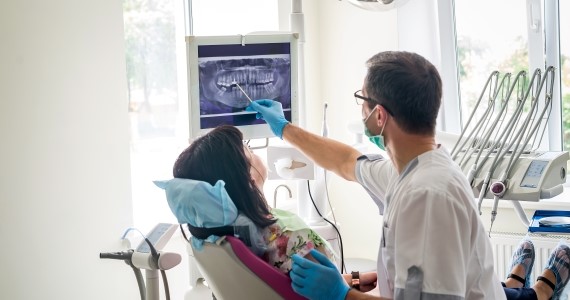Treatment Option Overview: Replacing Missing Teeth with a Partial Denture, Bridge, or Implant
Prevent digestive issues by restoring your missing teeth.

Many people will experience tooth loss in their lifetime, stemming anywhere from tooth decay, fracture, trauma, or are even born without the tooth buds to develop permanent teeth.
When tooth loss does occur, it is ideal to have some kind of dental prosthetic whenever possible, not necessarily for cosmetic purposes or to retain facial shape, rather to ensure food is chewed properly to prevent digestive issues.
Regardless of the cause of tooth loss, your dentist may give you several options when it comes to replacing the lost teeth:
Removable Partial Denture
A partial refers to a partial denture (as opposed to a full denture) and is used as a replacement for some lost teeth when other natural teeth are still present.
- The most common type of removable partial consists of high-quality replacement teeth on a rigid metal frame, or "plate". This type of partial looks similar to a denture, but without the full set of teeth. With proper care, a cast metal removable partial can last for many years.
- A flipper (stayplate) is another type of removable partial, though the replacement teeth are set in an acrylic base, rather than metal. Flippers are the least expensive type of partial as they are generally considered a temporary solution while a more permanent restoration is created, however, some people use them successfully for years.
- Flexible partial dentures are also an option for those who experience discomfort from or are allergic to acrylic. The bases of flexible partials are made from a thin plastic and tend to be comfortable and realistic in appearance. This type of partial is attached with thin, gum colored clasps that fit into the natural spaces around the teeth. Flexible partials are more expensive than flippers and are durable enough that some are worn for many years.
Fixed Bridge
Bridges are similar to partials, in that they are meant to replace one or more missing teeth in an area, however, they are fixed in the mouth, meaning they are permanently mounted to the healthy teeth surrounding the area with missing teeth.
- Installing a fixed bridge requires the natural tooth in front of and the natural tooth behind the missing tooth/teeth to be ground down. The bridge containing the replacement teeth is then anchored to each of the ground teeth. Crowns are placed atop the ground teeth to both restore the teeth and secure the bridge in place. Once fixed, this type of bridge is worn at all times and is brushed like just like existing teeth, though the dentist should also provide suggestions on how to clean under the bridge.
Implants
If too many teeth have been lost for a fixed bridge or it is not desired to damage existing healthy tooth structure, small posts may be implanted into the jaw bone in order to anchor and support a bridge. These types of implants can actually support a full arch of replacement teeth, eliminating the need for full dentures. Although the initial investment is high and more expensive than a standard fixed bridge or partial, an implantsupported fixed bridge can last for a lifetime.
Review Your Dental Insurance Plan
Once you are a member and before making a final decision about which dental treatment option to pursue, make sure to review your dental insurance benefits to verify what type of tooth replacement options are covered under your plan. BCBS FEP Dental strongly recommends and highly encourages pre-treatment estimates to be submitted for all major and extensive services prior to treatment.






